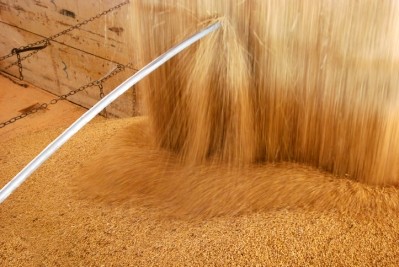US corn yields fall, soybeans ending stocks grow as delayed harvest continues

The US Department of Agriculture (USDA) released details Friday regarding crop production and exports in new crop production and World Agricultural Supply and Demand Estimate reports.
Overall, corn production for the 2019 harvest decline and soybean production dropped slightly from earlier estimations, the USDA said.
However, the estimation is that there could be more room for both crops to see production loss, said Todd Hubbs, clinical assistant professor, agricultural commodity markets with the University of Illinois.
“It could drop another 2+ bushels depending on how bad harvest loss is this year with the cold weather we’ve seen and the late planting into June,” he told us regarding the corn crop. “There were millions of acres planted into June, [and] it’s not been harvested yet – I don’t think the story is completely written yet.”
Few yield reports are available from late-planted corn grown in the Corn Belt, he said. The delay means the crop is still in the field and has experienced a hard freeze with another anticipated.
“I still think there’s downward movement to be had, but we won’t know until January,” he said referencing data set to be released by the USDA.
Soybean production has faced similar challenges, Hubbs said. Yields for the crop could drop especially with harvest loss.
“We had millions of acres planted deep into June [and] they’ve been frozen,” he said. “Harvest lost could be big.”
The commodity markets showed a slight uptick for corn, following the report’s release, he said. But, overall, the report was fairly neutral as use also declined.
“Soybeans are down, but in my mind that’s more of a trade issue,” he said. “They lowered crush mainly on the lower than expected crush in September, exports are still up in the air due to the trade issue, and I think the weakness we’re seeing in beans today has more to do with trade than it does the WASDE report.”
Looking forward, the focus at this point includes watching for information about crop production in South America, Hubbs said.
Corn forecast
The outlook for US corn production in 2019.20 anticipates reduced production, lower use and smaller ending stocks, the USDA said. From last month, corn production forecasts have dropped 118m and anticipated yield fell 1.4 bushels an acre.
However, feed and residual use also declined by about 25m bushels owing to the smaller crop and increase in price, the department said. Exports have been reduced based on pace of early-season sales and the use of corn in ethanol is down 25m bushels.
Ending stocks also declined 18m bushels, the department said. However, the season-average corn price saw a $0.05 boost to $3.85 per bushel.
Global production of coarse grains in 2019/20 saw a 1.8m ton reduction to 1.4bn tons, the USDA said.
However, international corn production is predicted to see increases in several African countries, Russia and Turkey to offset declines for the EU, Mexico and Ukraine, the department said. Global corn ending stocks were reduced by 6.6m.
Corn production in Mexico is expected to be the lowest recorded, the department added.
Exports of the feed grain are predicted to increase for Brazil and Russia, while the US and Mexico see a drop in sales, the USDA said. Corn imports in 2019/20 were increased for Vietnam, Colombia, Japan and South Korea.
Soybean picture
US soybean production is expected to drop with lower crush boosting ending stocks, the USDA said. Total production is forecast down slightly to 3.55bn bushels – based on lower yields.
Soybean crush fell 15m bushels owing to lower than expected early-season crush and reduced soybean meal export potential, the department said. Soybean ending stocks, however, are predicted to increase to reach 475m.
The expected season-average price for soybeans in 2019/20 is predicted to be $9 per bushel, while soybean meal remains at $325 per short ton, the department said.
The international oilseed outlook for 2019/20 anticipates reduced production, stocks and crush, the USDA said. Production is down 3.4m tons across India, Canada, Argentina, Australia and the EU based on results for soybeans, cottonseed, sunflower seed and rapeseed.
Slower crush is expected in India, China and Canada, the department said. Soybean ending stocks for 2019/20 fell based on projections for Argentina, Canada and India and were not completely offset by forecasts from Brazil and Egypt.
Wheat outlook
The outlook for wheat production in 2019/20 anticipates smaller stocks and a drop in domestic use, the USDA said. Wheat supplies were reduced by 42m bushels mainly based on reduced production of hard red spring wheat, white wheat and durum wheat.
Wheat stocks were lowered by 30m bushels and the season-average farm price dropped by $0.10 to $4.60 a bushel, the department said. Anticipated plantings in 2020/21 are forecast to be 45m acres.
Globally, the expectation is that there will be higher supplies, slightly more consumption, increased exports and larger ending stocks, the department said. Supply increases are focused on production from the EU, Russia and Ukraine, despite reduced production from Australia and Argentina.
World exports were increased to 180.7m tons, the USDA said. Global consumption is up 3% from last year, but supplies are increasing faster than use and 2019/20 ending stocks are expected to reach a record 288.3m tons.












